Tiny black bugs in the house near windows can be quite a nuisance for homeowners. These pests, often found congregating around window sills or frames, can include various species such as carpet beetles, springtails, or even ants like carpenter ants. While some of these bugs may be harmless, others, like termites or powderpost beetles, can cause significant damage to the wooden structures of your home.
Identifying and addressing the root cause of the infestation, whether it be excess moisture, poor sanitation, or cracks in the window frames, is crucial to effectively eliminating these unwelcome visitors and preventing future occurrences. Regular inspection and proper maintenance can help keep your home bug-free and comfortable.
Different Types of Tiny Black Bugs In House Near Windows
Pill Bugs
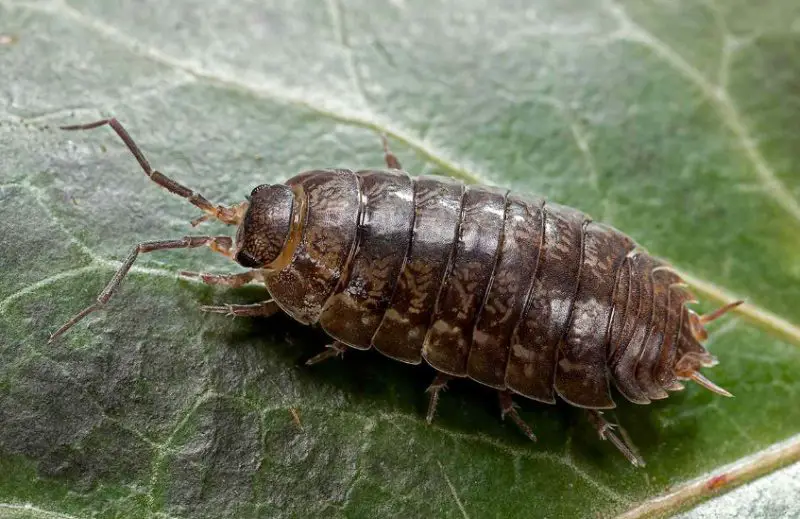
Pill bugs, named for their resemblance to small balls or pills, are commonly found outdoors but occasionally enter homes. While they typically don’t cause damage indoors, they can make a home less inviting. Originating from moist organic matter and nearby soils, they are attracted to damp environments such as moist crops and damp flower soils.
To reduce their presence indoors, it’s recommended to decrease the watering frequency of gardens. Pill bugs are challenging to eradicate due to their attraction to moisture and organic matter, requiring homeowners to address underlying moisture issues to prevent infestations.
Palmetto Bugs
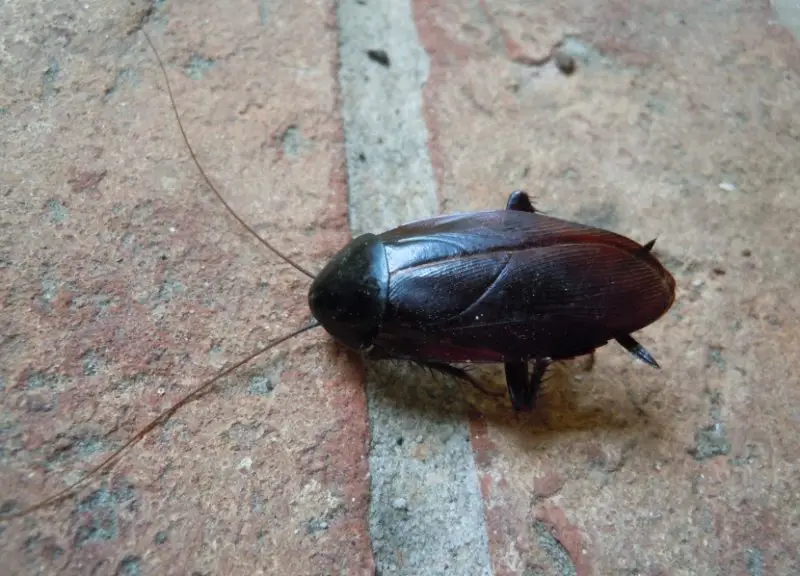
Palmetto bugs encompass various American cockroach species, prevalent in Southern states. They fly and breed indoors, feeding on meat, fruits, and decaying food, which is especially common in the summer. Indoors, they nest in dark, damp areas like corners or near leaks and sewers. Proper sanitation, sealing entry points, and eliminating open food sources are essential for eradication.
They may enter from neighboring homes, necessitating sealing of windows and doors. Recognizable by their large size and reddish-brown coloration, palmetto bugs are resilient pests that require thorough prevention measures for effective control.
Ticks
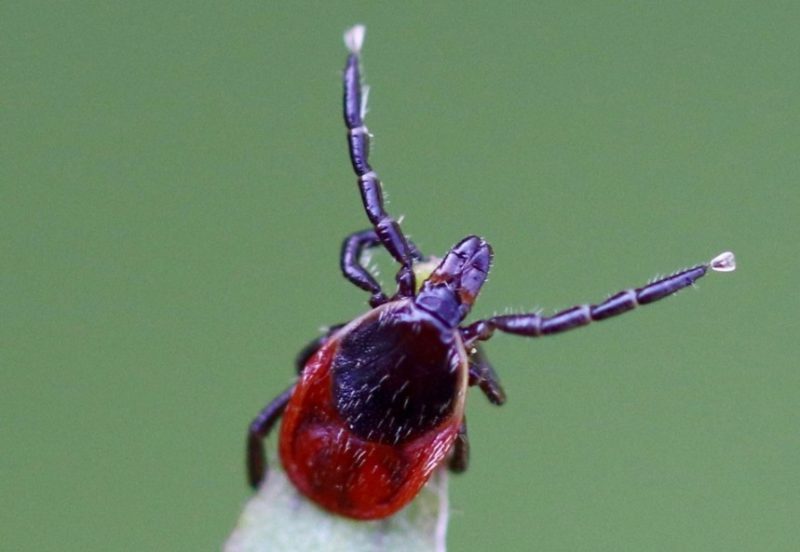
Ticks, though unable to fly, can enter homes through window cracks or open windows by crawling. Their bites can cause severe health issues like Lyme disease if not promptly removed. Common in areas with tall grass and vegetation, they also infest areas around livestock. Clearing ticks from the backyard often requires professional pest repellents and diligent yard maintenance, including trimming vegetation and regularly mowing grass.
Preventing ticks from entering homes involves sealing cracks and keeping windows closed, particularly during peak tick activity periods. Proper outdoor maintenance and vigilance are crucial for minimizing the risk of tick infestations.
Springtails
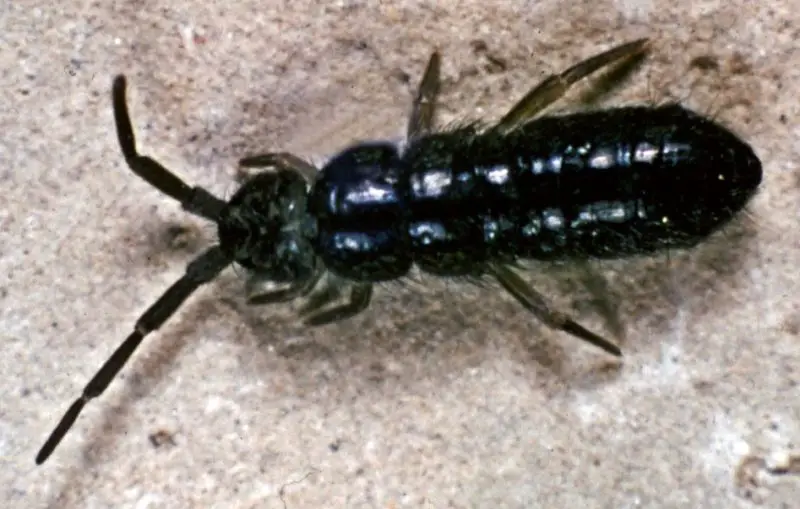
Springtails prefer high-humidity habitats, making windows a common sighting spot due to condensation. Though they don’t damage homes, they are nuisance pests. They feed on organic matter like plant fungi and decaying roots, so they’re common in homes with abundant vegetation. These black insects are resilient in cold weather and often move on snow in winter.
Managing moisture and condensation around windows helps control their presence. Using a heating source near windows reduces condensation, and managing soil moisture levels around the house can prevent springtail reproduction. High soil moisture favors their proliferation.
Carpet Beetles
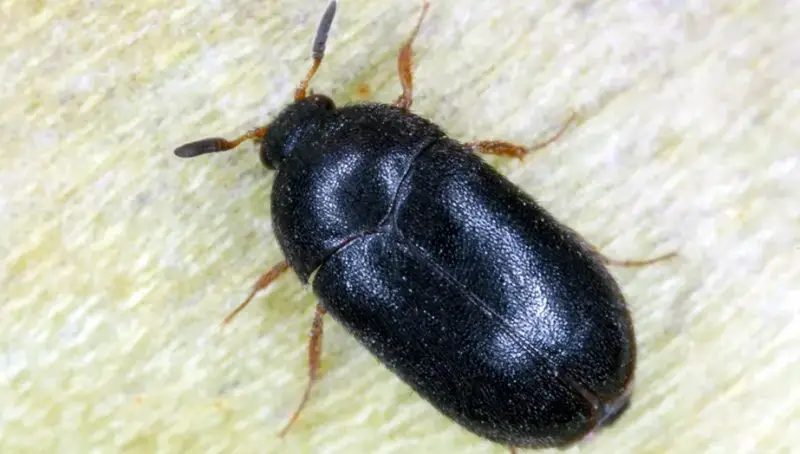
Carpet beetles, such as the Black carpet beetle (Attagenus unicolor), are highly damaging black bugs that often enter homes through windows. They are notorious for damaging household items, especially those high in keratin, such as carpets, animal-origin fibers, hairs, skin, and clothes. Female Black carpet beetles can lay up to 50 white eggs at a time.
They are attracted to light and typically fly indoors through windows during the summer. Spotting them on windows in the fall indicates they’re seeking a warm place to nest for winter. These beetles can survive winters indoors either as adults or larvae, making early intervention crucial.
Drugstore Beetles

Drugstore beetles are tiny bugs, growing up to 3.5 mm. They are often found in the kitchen, but they can also appear in other parts of the house. They are commonly seen around windows, attempting to reach the kitchen, where they infest food and packaged goods. These beetles are notorious in food storage and manufacturing facilities, feeding on flour, chocolate, cereal, and other stored foods.
To control them, store food properly to limit access. Additionally, monitor natural fabric clothes and items like furs and books, as Drugstore beetles will turn to these if food is scarce. Keeping food sealed and storage areas clean is crucial for prevention.
Gnats
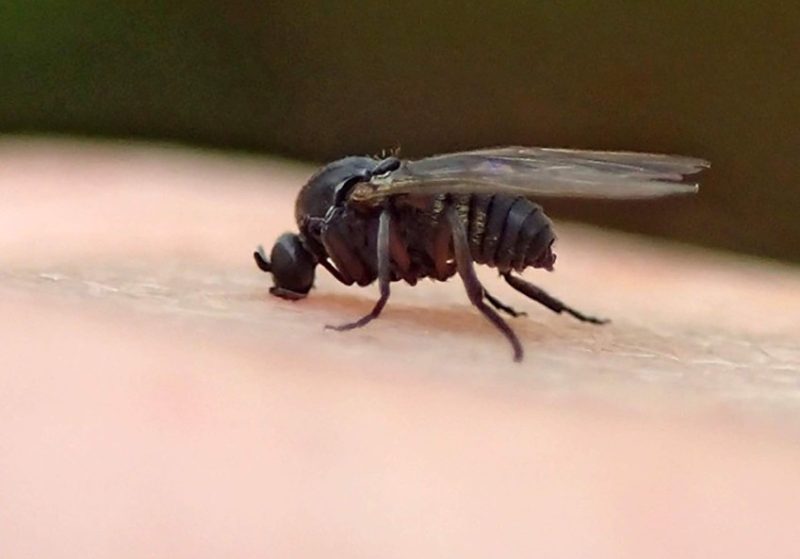
Gnats are very common in moist and coastal areas. Smaller than regular houseflies, they can be seen swarming around windows at dusk. These flies are attracted to decaying organic matter, puddling water, and moisture. Known for biting, gnats can damage both indoor and outdoor plants, and their larvae can kill host plants due to the sheer number of eggs laid.
Some gnat sub-species are dangerous to pets, with the black fly capable of killing animals in high numbers due to its deadly bite. To prevent gnats from gathering, turn off unnecessary lights in the morning to keep them away from windows.
Drain Flies
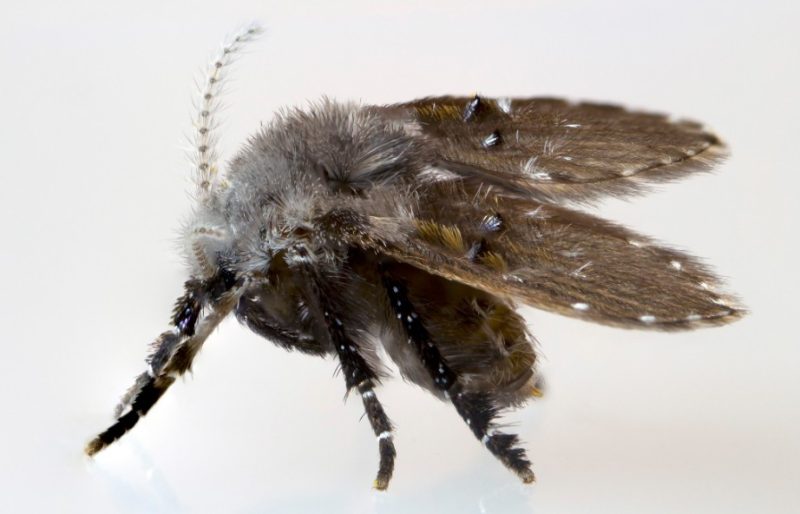
Drain flies are known nuisance pests, growing up to 1/5 inch in size and typically black, gray, or dull in color. Unlike gnats, they don’t bite but can be very annoying due to their rapid multiplication. They are most active in the evening and often seen around windows. These flies thrive in high humidity and puddling water, multiplying in drains, under sinks, bathrooms, or near toilets.
They live up to 2 weeks but reproduce quickly, making them hard to eliminate. To prevent infestations, eliminate all sources of puddling water around the house and check for nearby plants or water sources that might attract them.
Fruit Flies
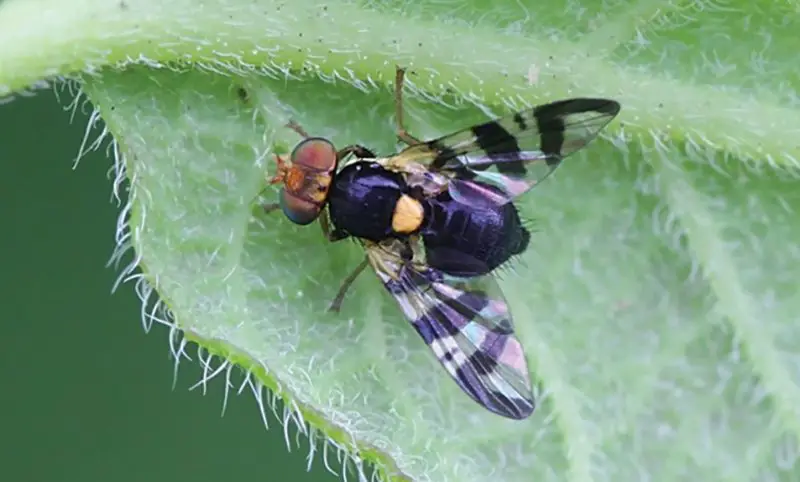
Fruit flies are common black insects often found near windows in homes. Attracted to fruits and sugary foods, they are typically seen around kitchen windows during summer days. These flies have a short lifespan of about 2 weeks, similar to drain flies, but they multiply quickly. Fruit flies can carry harmful bacteria like Salmonella and E. coli, posing health risks.
To manage them, store fruits in the refrigerator and eliminate any overripe or decaying produce. They are difficult to eliminate completely and usually disappear in the fall when temperatures drop and they die off.
Carpenter Ants
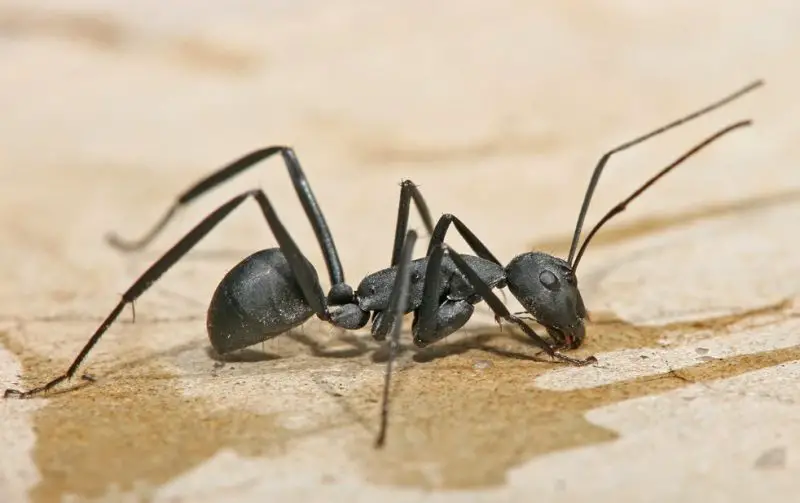
Carpenter ants are common, tiny black bugs found near windows inside homes. These ants dig galleries in window frames to lay eggs but don’t eat wood like termites. They can be seen around windows in spring and sometimes in winter when seeking nesting spots. Identifiable by their black or black-and-red bodies, carpenter ants vary in size from 3/8 inches to 1/2 inches.
They eat dead or living insects outdoors and protein-rich and sugary foods indoors. Both winged and wingless types exist. An invasion is noticeable as they move in lines, leaving scent traces for others to follow.
Stink Bugs
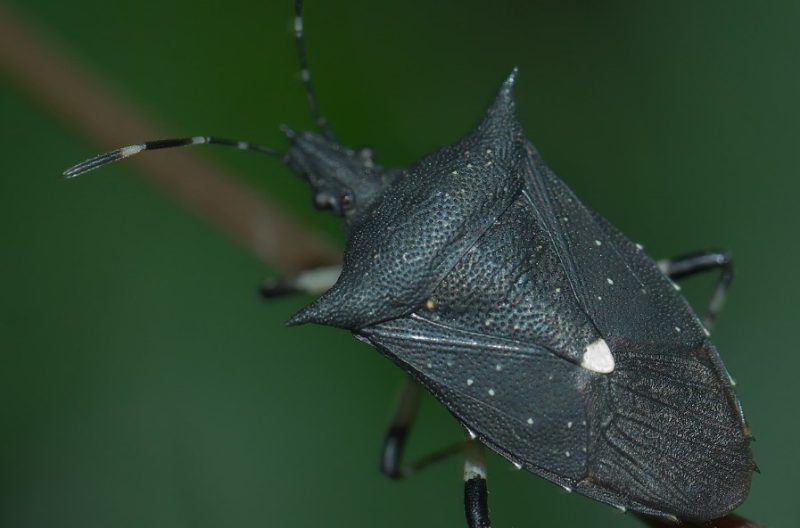
Stink bugs frequently enter homes seeking food or warmth, particularly near windows. Multiple species, including the Marmorated and Black stink bugs, are drawn to food like apples and berries, especially if fruit trees are nearby. They usually appear in June with the first fruits and might enter homes attracted to light. In fall, they seek refuge indoors from the cold.
Stink bugs are challenging to eliminate due to their lack of natural predators. Their bad taste and ability to emit foul odors protect them from predators like birds. These bugs are commonly seen around windows during summer and fall.
Termites
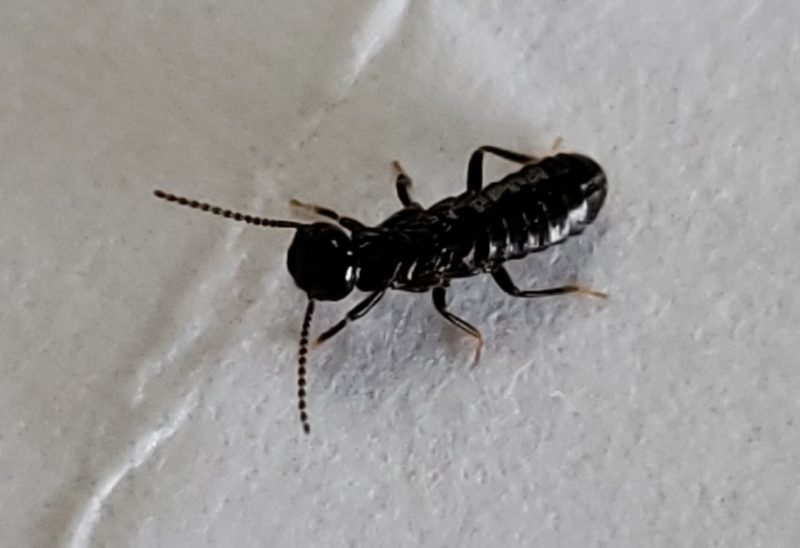
Termites are some of the most concerning tiny black bugs you might find near your home’s windows. While many termites are white, tan, or light yellow, subterranean termites (Rhinotermitidae) are often brown or black. They grow up to 1/8 inch and have elongated, narrow bodies with six legs. These termites are present in all US states except Alaska.
If you see small black termites around windows, it may indicate an advanced infestation. Early signs include mud tubes from the ground to the house and wood that sounds hollow when tapped. They prefer decaying wood, so their presence might indicate rotting window frames.
Houseflies
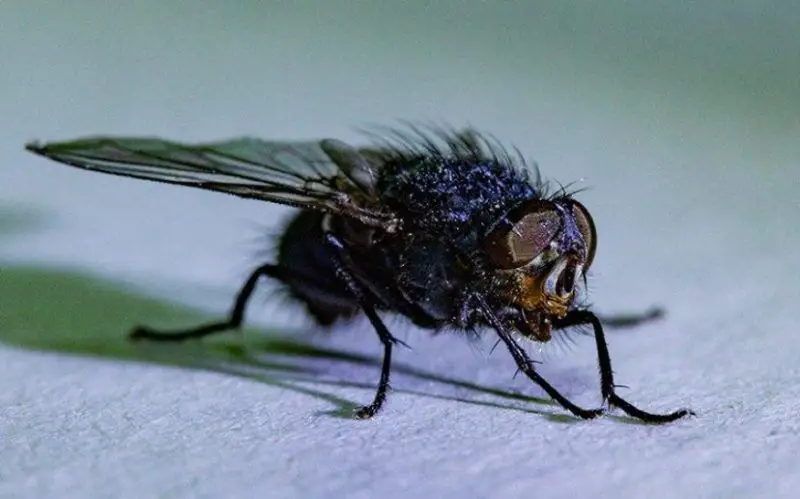
Houseflies are common in the summer and can survive indoors during the winter. Typically overwintering as eggs or larvae, they emerge in spring. A female housefly can lay up to 100 eggs at a time, leading to rapid population growth. Attracted to food, dirt, and livestock manure, they are prevalent around homes and farms, particularly those with chickens.
Poor sanitation is a key reason for their presence near windows. Houseflies carry bacteria, viruses, and pathogens, spreading diseases like salmonella, giardia, and Newcastle disease virus. To prevent infestations, eliminate garbage and keep trash cans away from the house.
Rice Weevils
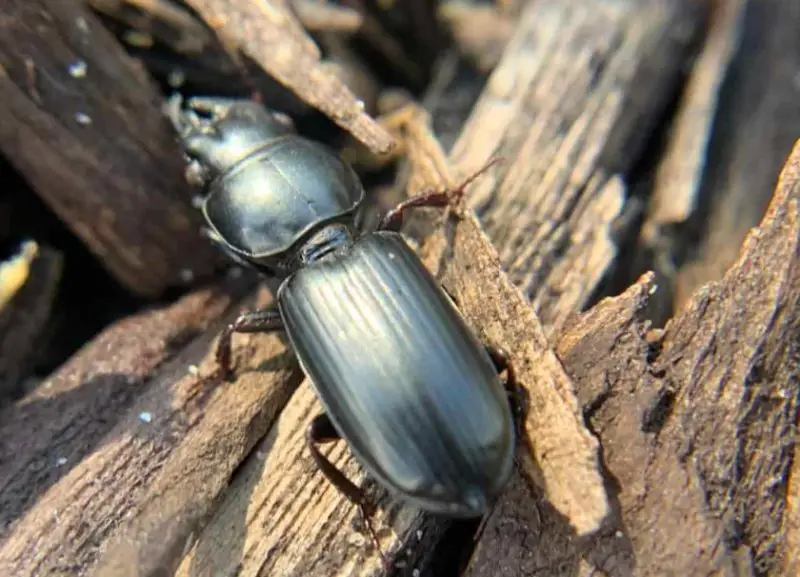
Rice weevils are recognizable by their snout-nosed appearance and are often found near kitchen windows. They can fly and feed exclusively on whole grains like rice, beans, and cereals. Once they find food, they live in it, making infestations common in rice packs and cereal boxes. These pests can live for up to two years indoors and lay up to 400 eggs in their lifetime, leading to rapid multiplication.
Rice weevils are attracted to light, so keeping kitchen lights off when not in use can help deter them. Using curtains to limit outdoor light exposure can also be effective. They are notorious for chewing through plastic containers, making it essential to keep all grains and boxed foods properly sealed.
Clover Mites
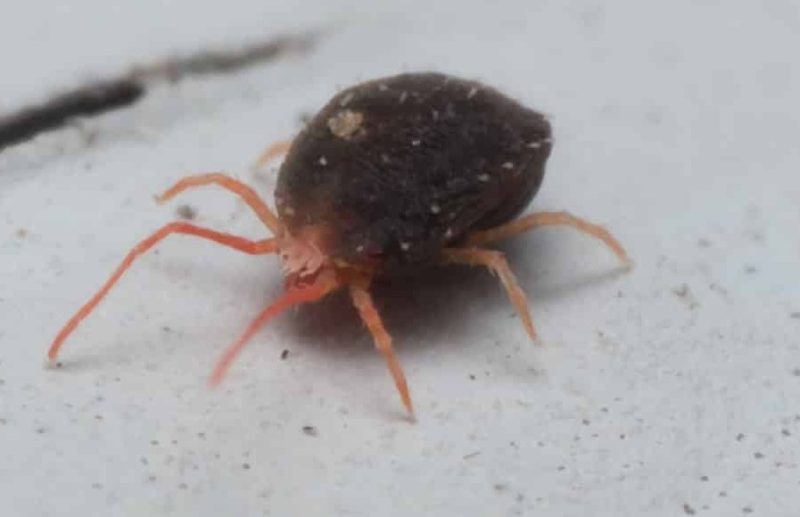
Clover mites are tiny black bugs commonly spotted around windows, attempting to enter homes. Their small size often leads them to be mistaken for dust or dirt particles. They thrive in areas with high fertilizer use, such as lawns, where they reside. Attracted to light, they may try to move indoors. While generally harmless inside, they can trigger allergies in sensitive individuals.
Clover mites typically die off in extreme temperatures, seeking shelter indoors during cold or hot weather. Though they don’t carry bacteria, their presence can exacerbate allergy symptoms, resembling those triggered by fine dust particles.
Livestock Mites
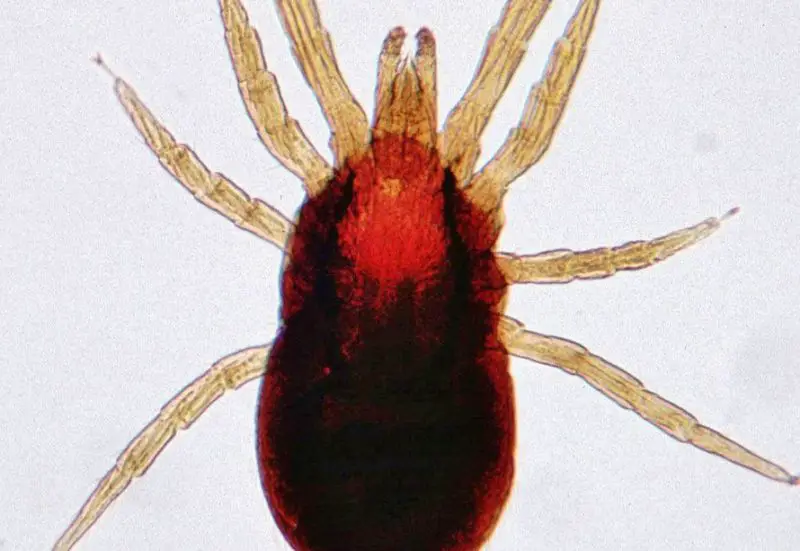
Livestock mites, resembling spiders with eight legs, are destructive pests that infiltrate homes, particularly those near farms or livestock. Black and red in color, they are initially drawn to light and can invade homes even in winter, thriving in the cold season. These pests pose a significant threat to livestock, capable of causing illness or death.
Severe infestations may require intervention by local authorities due to their rapid multiplication and potential impact on agriculture. Some sub-species, like the sheep scab mite, are regulated by state authorities due to their fast spread and harmful effects.
Parasitic Wasps
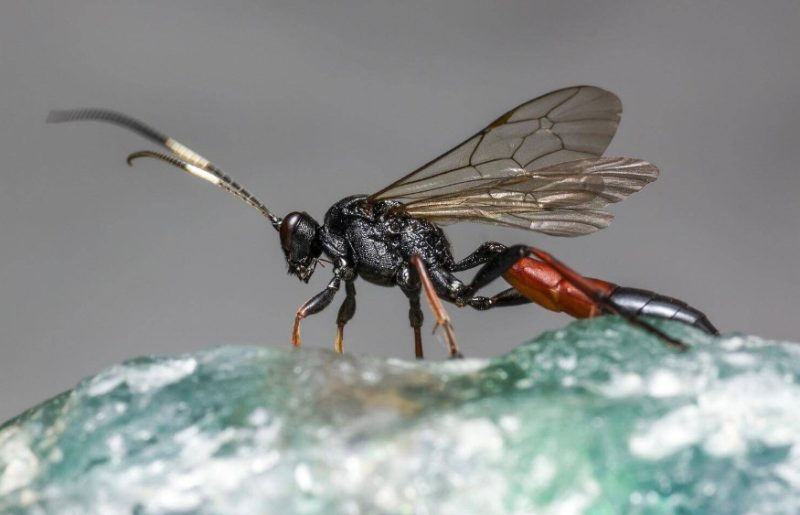
Parasitic wasps, diverse in size and color, develop as parasites in various bug hosts. They range from 0.5 to 3 inches long, with colors varying from all-black to yellow-black. While they can fly and enter indoors, most have no interest in indoor habitats as adults, preferring pollen and flower nectar. They lay eggs indoors only when necessary for their larvae, which feed on insects and require shelter from predators.
Considered beneficial, parasitic wasps are utilized for pest control. No specific measures are required against them except for eliminating home pests that may attract them as food sources for their larvae.
Bat Bugs

Bat bugs, found primarily in the Midwest, are named for their association with bats. These bugs feed on bat blood and are often carried into homes by bats, typically inhabiting attics and barns where bats reside. Once bats are eliminated, bat bugs may seek alternative food sources, including animal and human blood. They can be seen around windows and throughout the house after bats are removed.
Due to their resilience and potential health risks, it’s advisable to seek professional pest control assistance to effectively eliminate bat bugs from the premises. Proper bat exclusion measures are also essential to prevent reinfestation.
Junk Bugs
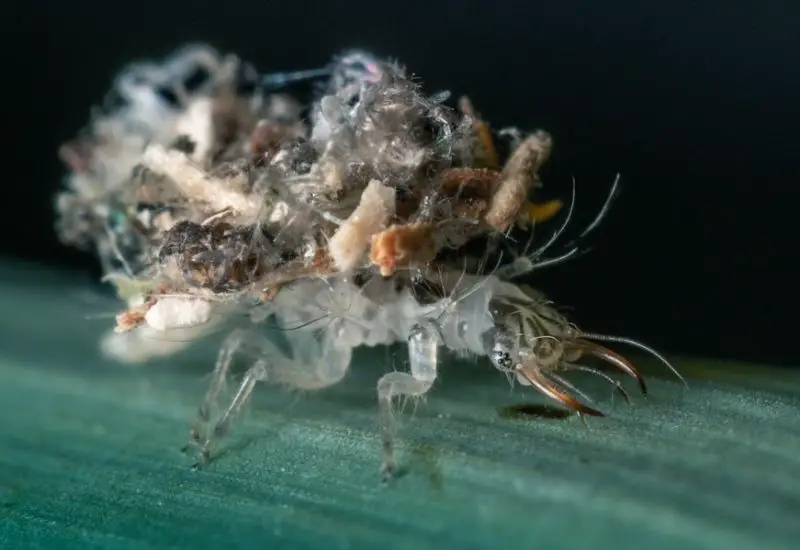
Junk bugs, often found around windows, have a friendly appearance. Common in the Midwest, like bat bugs, they primarily prey on small insects, moving around the house in search of prey. Using sharp mouthparts, they pierce and drink the liquefied contents of their victims. To deter junk bugs, it’s essential to eliminate all insects from the house.
While they are not harmful to humans, their presence can indicate an underlying insect infestation. Proper pest control measures, such as sealing entry points and reducing insect populations, can help prevent junk bugs from entering the home.
Silverfish
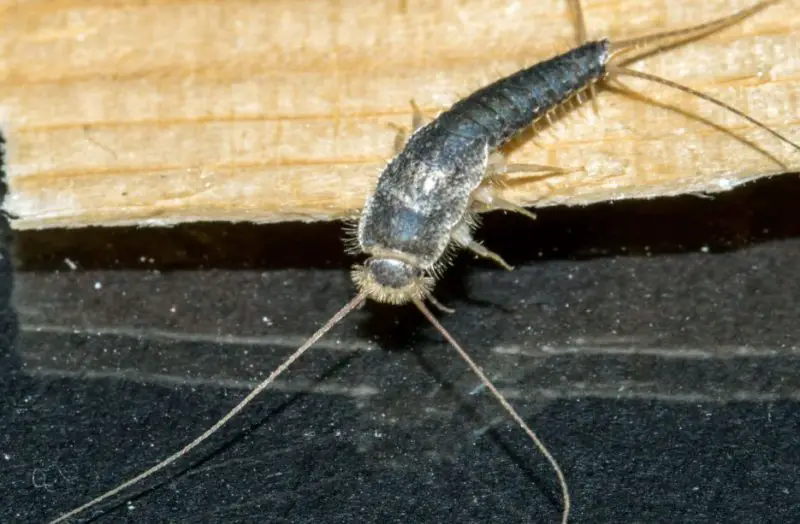
Silverfish are often found around windows when attempting to infest a home. These primitive insects have elongated bodies, tapering wider at the head. While unable to fly, they are adept crawlers and can jump several times their body length. Typically breeding in humid areas like bathrooms, they have a varied diet, consuming vegetables, meats, cereals, pet food, and even fabrics.
Nocturnal by nature, they avoid light, especially in the presence of people. Preventing silverfish infestations involves sealing cracks and entry points, particularly around windows where they may be attracted to light sources when no humans are present at night.
Powderpost Beetles
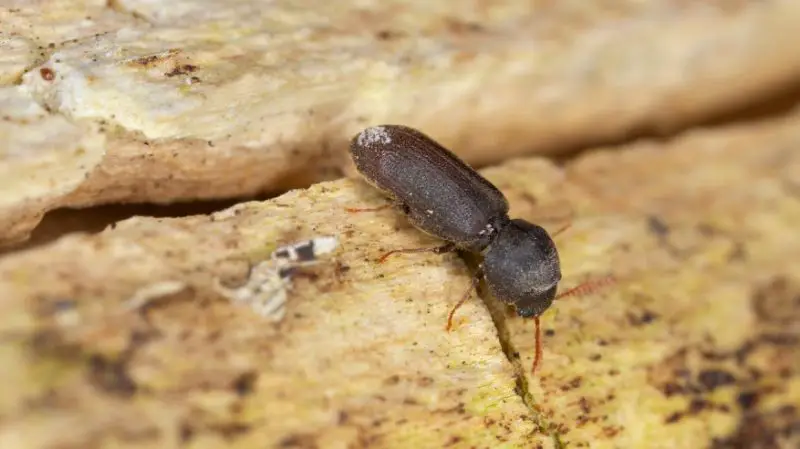
Powderpost beetles near windows signal wood infestation. These tiny insects, often just 1/16 inch long, dwell within tiny holes in wood, making them hard to spot. They typically infest unfinished wood and are not found in painted or finished window frames. Powderpost beetles dig into old, damp wood to lay eggs, preferring hardwood over softwood. High wood moisture levels indicate infestation.
Like termites, they target aged, moist wood, posing a threat to structural integrity. Regular inspection and maintenance are crucial to prevent powderpost beetle damage to windows and walls, particularly in older homes with untreated wood.
Carpenter Bees
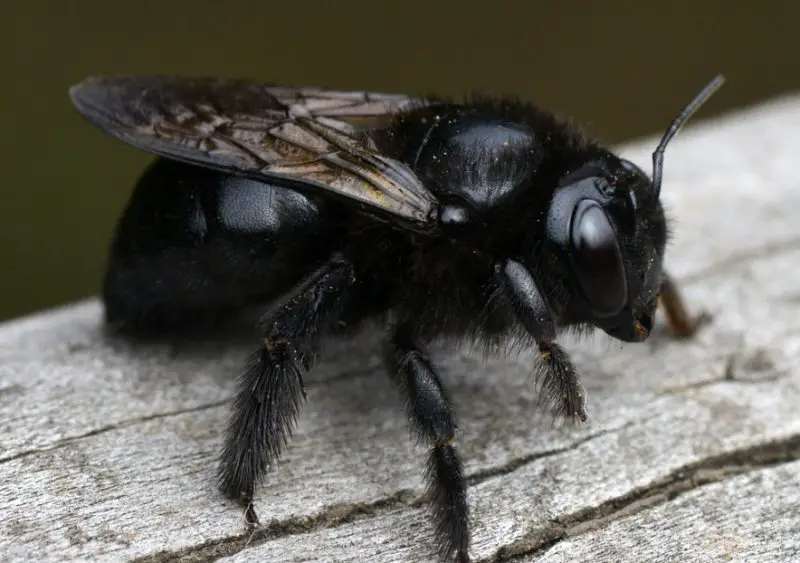
Carpenter bees, resembling bumblebees with small black and yellow bodies, are often seen around windows and houses. They tunnel directly into wood to lay eggs, potentially causing structural damage over time. While not as destructive as termites, they can still harm homes beyond cosmetic damage. Female carpenter bees are known for tunneling wood to create nests.
To control infestations, bifenthrin-based insecticides can be sprayed directly into the tunnels, effectively killing the bees. However, care must be taken to avoid harming beneficial pollinators. Regular inspection and treatment are essential to prevent structural damage caused by carpenter bees.






